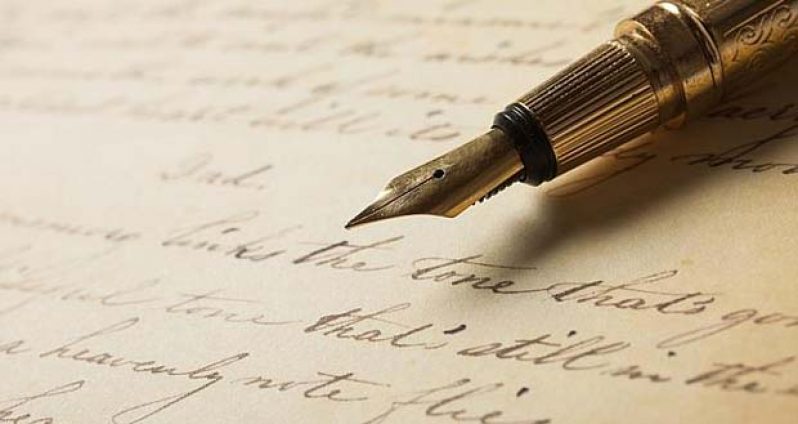Though all utterance, or oral speech, can express a speaker’s desire for power, their lack of knowledge, ignorance, or bias about someone or something, the very act of speaking orally allows for correction, or retraction, as the speaker continues to speak, especially if there is a dialogue with someone present who questions or contradicts what is being said.
WRITING NON FICTION
But in writing (as critic Roland Barthes once said), what is said – and especially when published – cannot be unsaid, except by further writing which contradicts, or changes what had been written before. This process has led to some of the most conscientious and humane writing. The writing we are speaking of here is of course strictly ‘non-fiction’; in other words, an intention to state facts seen, experienced, or acquired second hand from someone else’s written reports. It is here that the distinction between the credibility of utterance or oral speech, as opposed to written language, becomes acute; since immediate speech often involves dialogue with another, which allows for retractions and corrections as such speech progresses. Whereas non-fiction writing is a monologue of statements, reports, opinions, interpretations, that cannot be challenged on a equal basis, except by further writing, or re-writing, in the future.
HISTORICAL & CULTURAL WRITINGS
Historical and cultural writings, including written critical opinions, particularly about places, territories, countries, and people once colonised, remain an interesting area of ‘literature’ to focus on, primarilly for two reasons: (1) To show where non-fiction writings and publications, not only by Europeans and North Americans, can become influential opinions affecting citizens/readers anywhere; and (2) to show where this example can become a learned ‘model’ for writings by post-colonials about their own societies/nations; especially if there is a desire for power among such people. It is also a way of imposing the writer’s own personal selections and interpretations of local historical, political, or cultural activities, on any reading public, via publications.
NEW MEDIA HABITS
This topic assumes important contemporary relevance when we consider the effect of new habits, like Facebook comments, on topics that demand knowledge which previously would only receive public exposure from well-informed professionals. Today there are also newspapers deliberately exported for others to absorb without a critical approach; which means irresponsible writers can find encouragement for a preference of deliberate literary tactics aimed at propagating ‘selected’ data, or half-truths, rather than balanced, uninvolved or detached viewpoints.
FIRST WRITINGS ON GUYANA
The beginning of writings about that area of north coast South America which came to be known by the first early Flemish/Dutch adventurerers and seamen as ‘The Wild Coast.’ because of the lifestyle of Native Indians and the effulgent extremely fertile terrain they found there, actually received its first written reports without specific application of the name ‘Guiana’ or today’s ‘Guayana’ and ‘Guyana,’ first used by Spaniards and Sir Walter Raleigh, who both only later applied that name long after Amerigo Vespucci (in 1495) in his stunning little book titled ‘The New World’, described encountering a gentle, very hospitable coastal Native Indian tribe on the ‘Wild Coast’ between the mouths of the mighty Amazon, Essequibo, and Orinoco rivers. He wrote that these Amerindians carried him on their shoulders through the jungle to their village, and fed him tasty wild fowls cooked with hot stones buried in the earth. Such reports were born out by the later characteristic fact of the social tradition of Guyanese ‘hospitality’, apparently rooted in the first early Guyanese social lifestyle belonging to its ‘First Peoples’. Vespucci’s interpretation of iguanas he saw for the first time,(the Amerindians were eating them, he probably did too) as Dragons, reflected his honest ignorance of a delicious tropical animal he confused with a wishful ‘fairy tale’ animal the Europeans and Asians called ‘Dragons’ in their myths.
Sir Thomas More, on the other hand, elevated the vague obscure tropical geographical Caribbean/South American location of an ideal ‘primitive’ island community (perhaps Maracas island at the mouth of the Amazon, once a highly developed South American indigenous culture) of the Antipodes, into the concept of UTOPIA, the name of his (non-fiction?) famous book, about an ideal society he learnt of from stories by a Flemish sailor who had voyaged and returned from there in the late 16th century. More’s writing that the Utopians used golden utensils for the lowest human habits, were scandalously contrary to affluent values in Europe at the time, where such precious metal bore the status of wealth and power, and this became one of the surmised additional reasons the writer was put to death by a mentally unbalanced English king. Nevertheless, More’s book UTOPIA increased the positive and moral power of literature, whether non-fiction or fiction.
(by Terence Roberts)



.jpg)









